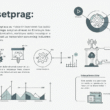Content management systems have appeared not so long ago. The first system is considered to be Vignette, which was developed in the USA in 1995. In our country, content management solutions appeared much later.
Most often, CMS looks like a visual interface through which you can influence the external display of the site being served. CMS is usually implemented as a web – interface, so to get access to it, it is enough to enter the site administrator panel through a browser. There are other options – for example, Windows applications that require installation on the computer’s hard drive. Here are some functions, classification and benefits of a best website builder shared by the professional team of Dorik CMS. Let’s get started!
CMS functions can be divided into several main categories:
Creation – providing developers with convenient and familiar means of creating content.
Management – storing information content in a single repository, tracking document versions, controlling access to the user system, integrating with existing information systems and managing the workflow of documents.
Publishing – automatic placement of information content on the user’s terminal. The tools available in the CMS automatically “adjust” the appearance of the published web page to the design of the site.
Presentation – additional functions that improve the form of data presentation; let’s say you can build a navigation through the structure of the repository.
Benefits of CMS
Usage CMS provides the following benefits to both the developer and customers and site users:
Prompt updating of content. Using CMS, you can, without being a professional developer, create and modifywebsite content . Information can be published by the employee who owns it, intermediaries in the form of technical specialists are not needed.
Reducing the cost of support due to the lack of remuneration of the webmaster, reducing the loss of time searching for documents, eliminating duplication and errors, speeding up communication with partners and customers.
Provision of additional services to the user (search, chats, forums, voting), already implemented within thecontent management systems.
Reducing development time and cost, as the most popular features are already implemented in the content management system and can be used immediately.
Improving the quality of development due to the use of ready-made software modules that have already passed multiple tests.
Reduced cost of future changes as content management systems separate data from presentation.
AmongCMS systems often distinguish the so-called frameworks or frameworks (CMF, content management framework) – tools for creating a system.
The rapid development of Internet technologies in recent years lead to the differentiation of different types of content management systems.
Classification Of CMS
Currently, there is no sufficiently clear classification of CMS. This is due to the fact that the market for content management systems is quite young, and the developers of this kind of software are very fragmented. CMS is difficult to subdivide into any groups also because they all differ significantly from each other. So any classification can be called sufficiently conditional.
For a generalized classification, the following criteria can be used:
availability of various functions and modules, understandability and accessibility to the user;
possibility of CMS operation on various platforms, compatibility with various databases, possibility of connecting additional modules;
manufacturability – the use of technologies that increase the reliability and speed of the content management system;




